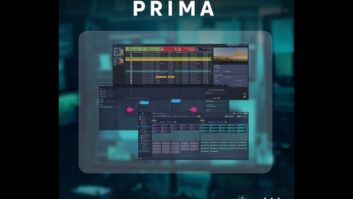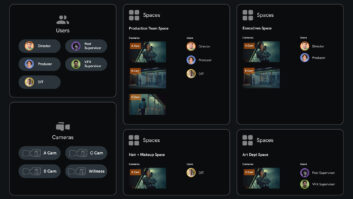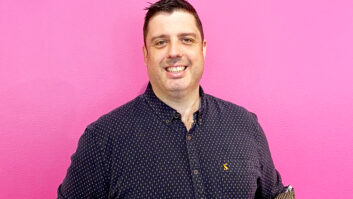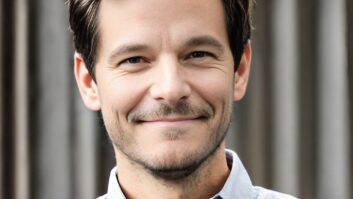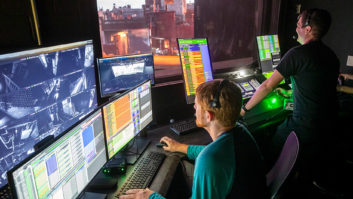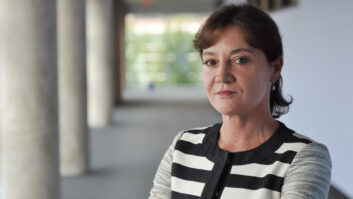Julianna Mercado, Junior real-time designer, Meptik
Talk us through an average day in your role.
An average day can vary depending on the virtual production project we’re working on. Typically, I’m working with the rest of the creative team in Unreal Engine as we make anything from design-based spaces to more photorealistic worlds, but we also work in other systems like Notch and Unity. When I’m not working on-site, I’ll be doing R&D in our in-house LED volume or attending meetings with clients.
How did you get started working with real-time design?
Working in real-time was really an unexpected opportunity. Before joining Meptik, I worked as a scenic artist on a TV show called The Glades. I saw myself working as a lighting artist for film and TV and using pre-rendered software like Autodesk Maya, but I jumped into the real-time rendering workflow when I began my internship at Meptik, that then evolved into a full-time position as a junior real-time designer.
What training did you have before entering the industry?
Although my experience with 3D began with pursuing my master’s degree in visual effects, I was a painter before ever touching 3D software. Funnily enough, I think much of my physical art style transitioned to 3D. Formal schooling provided a solid foundation of 3D knowledge but most of my learning came from my internship at Meptik.
Aside from learning technical skills, like how to model, light, UV map, and render out sequences, my internship allowed me to observe and learn more practical skills like meeting with clients, working on set, and what a project looks like from start to finish. Like any skill, transitioning from pre-rendered to real-time was bumpy at first, but so many of the techniques in pre-rendered 3D workflows apply in Unreal Engine or Notch.
Can you talk us through your favourite real-time design job?
My favorite job was Defy the Odds, the short film we worked on with award-winning director and editor Corry Wiens. It was based on the true story of Bill Lester, the first black NASCAR driver to win a Grand-Am race. Using a virtual production workflow powered by disguise software and hardware, we designed a virtual office space backdrop with a practical set in the foreground.
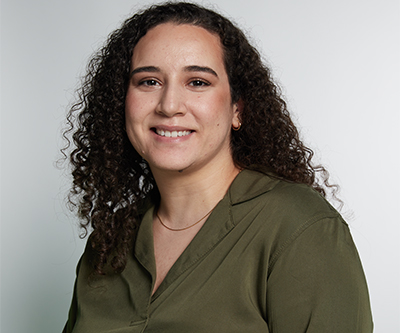
For the custom-designed virtual set of the office space, Corry had a very specific vision: The overhead fluorescents had to include a unique light trigger that would turn off the lights behind the subject one by one. Finding this type of location would have been next to impossible, and building this type of set would have required a much larger budget. Instead, we shot at the virtual production studio Arc Studios, where we built an entire virtual office space, designed the lights in 3D and used Unreal Engine to turn them off one by one.
What are you most excited about for the future of virtual production?
I’m most excited to see the creative and unique ways people use this technology. Visual effects have always been about smoke and mirrors and using what you have to problem-solve in innovative ways. Real-time is a new tool that allows creatives more unique opportunities and possibilities.
We created a virtual city skyline with an endless golden hour for an Apple Music commercial for Thomas Rhett’s radio show Where We Started, which was filmed and wrapped in less than four hours. For Emily Rowed’s Bloom music video, which has been singled out as one of the best in the virtual and remote category at the 2022 Webby Awards, we used virtual production and xR technology to visualise a magical, bioluminescent forest. When we created content for Lenovo’s Evolve Small: Introducing the Queen of Small campaign we were able to build an entire town, in which fine details like lighting could be adjusted in real-time. Instead of the final composite coming a month later, it could be seen right there on the monitor on set.
What advice would you give to someone looking to explore a similar role?
Be comfortable with being uncomfortable. There is so much problem-solving that goes into this field, and every day presents new challenges and solutions. Growing isn’t always comfortable, but becoming more comfortable with it lets you focus more on small improvements instead of feeling overwhelmed by the problems at hand.
